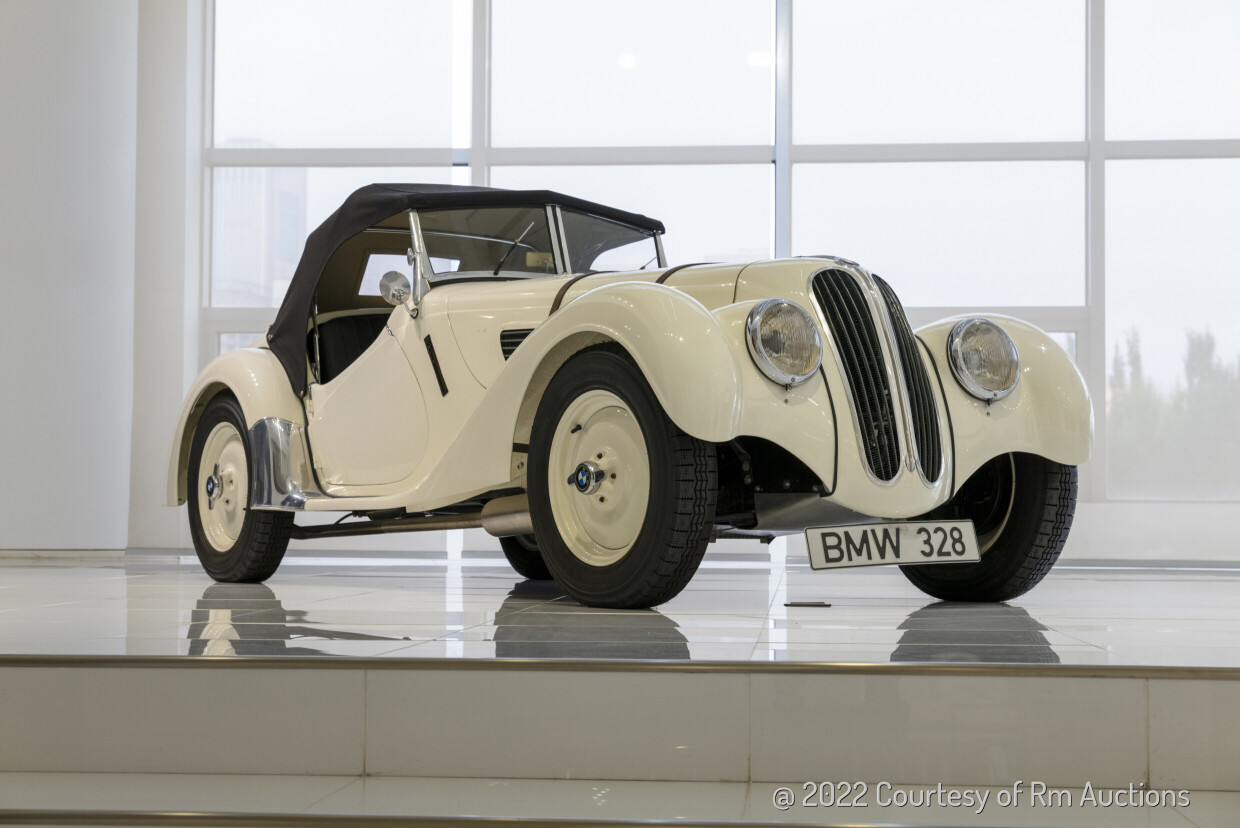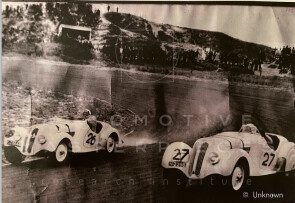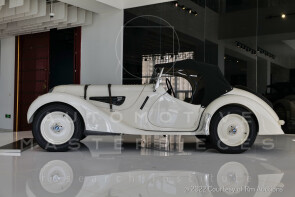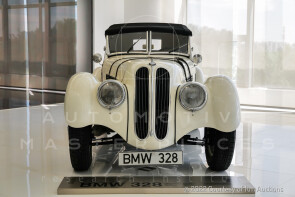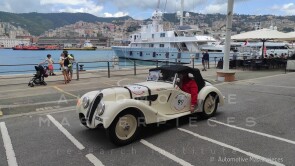
1937 Bmw 328
ON/OFF
Why am I an Automotive Masterpiece?
L. Limited edition cars
no. 403 manufactured. 403 standard roadsters produced on a total of 464 units.
The BMW 328 is undoubtedly the most iconic pre-war BMW and was a sports car produced between 1936 and 1940 in only 464 units, of which 403 were delivered in the original configuration planned by the Bavarian company, while the remaining examples were entrusted to external coachbuilders. It was conceived with the aim of creating a competitive car in the sports category up to 2 liters of displacement, with advanced technical solutions and a contained weight. For this purpose, the project was assigned in 1935 to Rudolf Schleicher and Fritz Fiedler; the latter, just over thirty years old, had joined BMW from Horch in 1932 and was already the creator of several BMW models. A major constraint for the designers was the strictly limited budget: in fact, they had to work almost exclusively with what was already available in-house. Fiedler drew inspiration from the solutions learned from Rudolf Schleicher and Ernst Henne, as well as from the experience acquired with the BMW 315 and 319 models. The 328 was partly based on the chassis and mechanics of the BMW 319/1 but was profoundly developed. The inline six-cylinder engine, brought to 1971 cc, equipped both the less extreme 326 and 327 and the more performance-oriented 328. Budget reasons did not allow the use of a supercharger or the development of a new overhead camshaft cylinder head. To achieve higher performance, Rudolf Schleicher, inspired by a solution developed by Talbot-Lago for some of its racing cars, designed for the 328 a special valve timing layout, still with pushrods and rocker arms, but with valves arranged in a V. A new crossflow aluminum cylinder head with overhead valves operated by pushrods and rocker arms was adopted, along with three Solex carburetors; the power output was about 80 hp at 5,000 rpm. The 4-speed manual gearbox, with synchronized third and fourth gears, was supplied by Hurth or ZF. The ladder frame chassis was reinforced and featured independent front suspension using a transverse leaf spring, and a live rear axle with semi-elliptical leaf springs with friction dampers all-round. The 328 was designed for sporting use, including in terms of body shape, although the goal was also to update the styling of the new car. The design started from the 319/1, optimizing the stylistic content for aerodynamic efficiency. In this light, elements such as the semi-recessed headlights in the low, more enveloping fenders, the more backward-tilted grille, and the smoother general body lines should be understood. The two-seater spider body was initially made in steel by Ambi-Budd and later in aluminum by other coachbuilders. Thanks to a contained weight of around 830 kg, top speed exceeded 150 km/h. With a very long hood and short tail, attention was also given to aesthetics for its own sake, since the 328 was destined for sale, produced in a small series for a lucky few: its price of 7,400 RM (Reichsmark) was equivalent to that of a small detached house. The 328 was not presented to the public and press in the usual way, but made its debut on 14 June 1936, at the Eifelrennen on the Nürburgring circuit, where it immediately won the 2-liter class with official driver Ernst Henne. The BMW 328 achieved extraordinary racing success, winning over 120 races between 1936 and 1940. It won its class at the 1938 Mille Miglia with Bäumer and Graf, at the 1939 24 Hours of Le Mans with Aldington and Dobson, and in 1940 won the Mille Miglia Cup with the streamlined Touring Coupé version, driven by Fritz Huschke von Hanstein and Walter Bäumer. The 328 was also produced in special versions for racing: among them, the 328 Mille Miglia Touring Coupé with aluminum streamlined bodywork built by Touring using the Superleggera method, the 328 Kamm Coupé with experimental truncated tail, developed according to Dr. Wunibald Kamm’s aerodynamic theories, and the 328 Stromlinienwagen for high-speed competitions. After the war, the 328’s designs and components were acquired by the British and used as the basis for the Bristol 400 and other cars of the Bristol brand, as well as by Frazer Nash and some single-seaters such as the Cooper-Bristol. The BMW six-cylinder engine continued to be successfully used in motorsports throughout the 1950s. The BMW 328 is considered a milestone in pre-war sports car history for its dynamic balance, technical innovation, and racing success. In 1999, it was named sports car of the century in its category by the German magazine Motor Klassik.
Chassis no. 85111 is one of the early examples built of the BMW 328 production (which began with chassis no. 85001). It was delivered new to the Berlin BMW dealer Brenner & Schoth on 5 July 1937. Little is known about its pre-war history: the name of the first owner remains unknown, and no evidence has emerged to confirm any sporting use before World War II. However, in 1949, the car was imported into the Netherlands and became the property of Mr. Klaver. Research has revealed that he was Simon Petrus Adrianus Klaver, a prominent meat merchant operating in the bustling commercial area of Jan Evertsenstraat in Amsterdam. Klaver was also an enthusiastic gentleman driver in his spare time, and there is documented proof of this 328’s participation in the Voor de Nationale Sportwagen Race held on 26 June 1949 at the Zandvoort circuit. The car was entered under the name of 34-year-old Mr. S.P.A. Klaver, who also took the wheel himself. A period photograph shows chassis no. 85111 in action, fitted in minimalist racing trim: the car retains standard steel wheels, the split windshield is flipped down, and the bonnet is secured with leather safety straps. The car bore the Dutch registration GZ 86441 and carried race number 26. Further competition history remains to be discovered and verified. Subsequent history is largely unknown. In 2011, the BMW was noted as being registered in Germany, and between 2014 and 2016, BMW Group Classic carried out a full restoration, with invoices on file totalling nearly €200,000. At the end of the work, BMW Group Classic issued an official expertise to validate the car (protocol no. 226). In 2016, chassis 85111 was acquired for ‘The Bavarian Legends Collection’, a private museum curated by a major BMW dealership in China. Returned to running condition, the car has recently participated in historic racing events in one of its most natural arenas: the Mille Miglia. It finished 69th overall in the 2024 edition. Today, BMW 328 chassis no. 85111 is presented in what is presumably its original cream white colour. It retains the leather bonnet straps, but for improved road usability, it is equipped with a split windscreen of standard height and a black fabric soft top, matching the interior.
